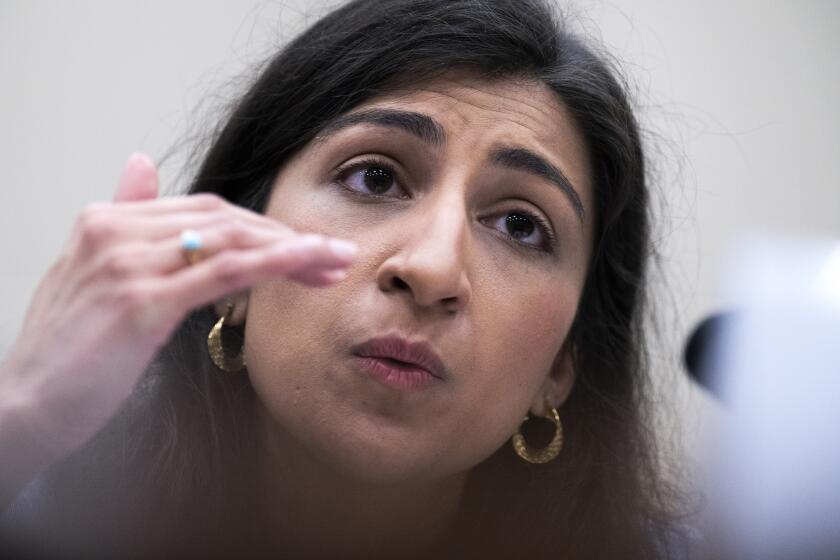$4.6-billion lease being finalized at Long Beach port
The Port of Long Beach has reached a tentative agreement with one of the world’s biggest cargo shipping companies on a 40-year, $4.6-billion lease. The deal involves the port’s largest-ever terminal upgrade and expansion, known as the Middle Harbor project.
Port officials are finalizing the deal with Hong Kong-based Orient Overseas Container Line, more commonly known in industry circles as OOCL. With a fleet of 84 owned and chartered ships, OOCL ranks as the world’s 12th largest ocean shipping line. Long Beach officials described the deal as a record for the port and a vote of confidence in the port’s future.
“This agreement represents a major endorsement of our vision for the port by one of the leading maritime companies in the world,” said J. Christopher Lytle, the new executive director of the Long Beach port. Lytle is expected to make the announcement during a State of the Port speech Thursday at the Long Beach Convention Center.
Observers said the announcement could not have come at a better time for the port, which ranks second only to the neighboring Port of Los Angeles in the number of cargo containers it handles.
It comes after a down year for cargo at the port after it lost a tenant that decided not to wait for the completion of the Middle Harbor project, which updates and expands a pair of old terminals and piers.
The Hyundai shipping line and its California United Terminals were the other players who were supposed to benefit from the site upgrade, but they moved instead to Los Angeles. That was one reason why Long Beach lost some market share and Los Angeles gained some in 2011. Now, OOCL plans to take the entire site.
The deal “demonstrates our long-term commitment to the Port of Long Beach as the gateway of choice for North America and solidifies our economic partnership with the region,” said Philip Chow, OOCL’s chief executive. “We look forward to seeing the positive impact that this commitment will have for years to come.”
Local trade experts and port boosters said the agreement is important for the region, which relies on international trade and the ports as significant sources of employment.
“This is very good news,” said John Husing, principal of the Redlands firm Economics and Politics, which tracks trade’s impact on the Inland Empire. “It means the Port of Long Beach is reaching out successfully. It means they intend to remain competitive.”
Wally Baker, president of the Jobs 1st Alliance, a group dedicated to ensuring that the Los Angeles and Long Beach ports remain the nation’s premier trade gateway, said the announcement was an “excellent way to start the new year. We will stay on top if we continue to make deals like this, and there are other deals to be made.”
When completed, the Middle Harbor project is expected to be one of the greenest and most advanced cargo terminals in the nation. At full build-out, the more than 300-acre site will have the capacity to handle 3 million cargo containers.
That’s more than twice the current capacity of the two terminals that are being replaced, the old California United Terminals and Long Beach Container Terminal, where OOCL currently operates. In fact, Middle Harbor by itself would rank as the fourth busiest seaport in the nation.
Long Beach is putting up $1.2 billion of the project’s costs and OOCL is putting in $500 million. The nine-year project is already underway. It will fill in a waterway that separates the two older terminals, add on-dock rail to eliminate truck trips and allow ships to plug into the electrical grid, eliminating the need for them to idle their diesel engines.
Long Beach officials said the project would create 1,000 temporary construction jobs and 14,000 permanent jobs.
“This is a win, win, win for everyone,” Long Beach Mayor Bob Foster said. “This is a win for the city of Long Beach, a win for jobs and a win for the environment.”
More to Read
Inside the business of entertainment
The Wide Shot brings you news, analysis and insights on everything from streaming wars to production — and what it all means for the future.
You may occasionally receive promotional content from the Los Angeles Times.











